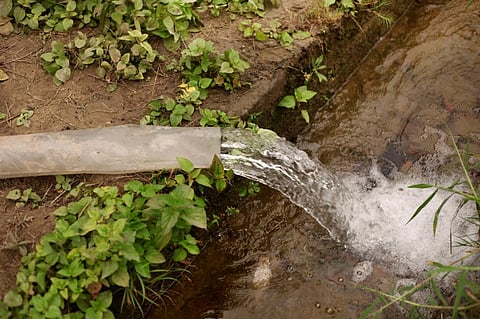

More than half (52 per cent) of the irrigation expansion has taken place in areas that were already water-stressed in the year 2000, with India alone accounting for 36 per cent of global unsustainable expansion.
It is well known that irrigation is necessary for increasing the global crop production but researchers from the United States of America, Germany, Finland and China have now investigated how the expansion of irrigated agriculture has been in an unsustainable manner, leaving insufficient supply for nature and for other human needs.
Over 90 per cent of humanity’s consumptive water use is used for irrigated agricultural production. While irrigated areas account for 24 per cent of croplands, roughly 40 per cent of global food production is from irrigated croplands.
Through a spatially detailed understanding of the evolution of the global area equipped for irrigation (AEI), since the start of 21st century, the research, published in journal Nature Water, on March 8, 2024, showed that from 2000 to 2015, this area increased by 11 per cent – from 297 million hectares in 2000 to 330 million hectares by 2015.
This included areas of both substantial expansion, such as northwest India and northeast China, and decline, such as Russia.
This net increase was the result of a 65 mha gross increase in some areas and a 32 mha gross decrease in other areas. The countries in which irrigation expanded (on net) the most were China (12.8 mha) and India (8.5 mha) and a major reason behind this was the increasing investment in irrigation projects to maintain food self-sufficiency.
Area equipped for irrigation (AEI) for major countries between 2000 and 2015
Source: ‘Half of twenty-first century global irrigation expansion has been in water-stressed regions’
These outputs were combined with information on green (that is, rainfall) and blue (that is, surface and ground) water stress, for examining the extent of unsustainable expansion of irrigation in places already experiencing water stress. Existence of water stress suggests further depletion of streamflow and aquifers in these locations.
The research titled Half of twenty-first century global irrigation expansion has been in water-stressed regions classifies water stress as the result of either green water stress (GWS), when rainfall is insufficient to meet a crop’s water requirement and supplementary irrigation is needed, or blue water stress (BWS), when renewable surface and groundwater availability (that is, total availability after accounting for environmental flows) is insufficient to meet irrigation water demand.
Of the countries with the largest AEI in 2015, India and Pakistan have seen the most unsustainable expansion, with 86 per cent (12.1 mha) and 87 per cent (1.53 mha) of the gross expansion in AEI, respectively, taking place in locations that were already experiencing BWS.
In the case of BWS, expansion of irrigation infrastructure can lead to enhanced depletion of aquifers and streamflow. In the case of GWS, expansion of irrigation infrastructure can be a valuable strategy for buffering against variations in rainfall, provided that blue water resources are sufficiently available.
Of the 65 mha of gross irrigation expansion, 1.1 mha occurred in regions with only BWS, 19 mha occurred in regions with only GWS, 31.2 mha occurred in regions with both BWS and GWS, and 13.9 mha occurred in regions with no water stress.
Conversely, there were also countries in which most of the AEI expansion was sustainable (from the perspective of water resources), such as Brazil (3.4 mha, 96 per cent of the total expansion was sustainable), Indonesia (0.9 mha, 76 per cent), Peru (0.8 mha, 94 per cent), Italy (0.3 mha, 85 per cent) and France (0.2 mha, 88 per cent).
The research was done by Piyush Mehta, Kyle Frankel Davis from University of Delaware, US; Stefan Siebert from University of Gottingen, Germany; Matti Kummu from Aalto University, Finland; Qinyu Deng from Beijing Normal University, China; Tariq Ali from Jiangxi Agricultural University, China; Landon Marston from Virginia Polytechnic Institute and State University, US; and Wei Xie from Peking University, China.
For the study, the researchers used the latest subnational irrigation statistics (covering 17,298 administrative units) for 243 countries from international databases, national agricultural censuses and government reports, to develop a gridded global product of AEI for the years 2000, 2005, 2010 and 2015.
The extent to which countries increase crop production through unsustainable irrigation expansion will have important implications for the food self-sufficiency of nations as well as global food security, given the growing reliance of many countries on food imports.
“Countries continuing to practise and expand irrigated agriculture in places where water is scarce subject themselves to an increasing likelihood that freshwater resources could become inaccessible (that is, groundwater table drawdown and streamflow depletion) and ultimately impose physical and/or economic limits on the levels of irrigated production. For food-importing countries (for example, Saudi Arabia and South Africa), such a situation may cause local food production to falter and necessitate a growing reliance on food trade. For food exporters (for example, the US and Australia), continued unsustainable irrigation practices could force a reduction in food exports to continue to meet domestic food demand,” the authors said.